-
Share with us... Your Best & Worst Collections of Haute Couture S/S 2025
You are using an out of date browser. It may not display this or other websites correctly.
You should upgrade or use an alternative browser.
You should upgrade or use an alternative browser.
Nicolas di Felice - Designer, Creative Director of Courrèges
- Thread starter LadyJunon
- Start date
LadyJunon
Well-Known Member
- Joined
- Aug 17, 2020
- Messages
- 4,170
- Reaction score
- 8,763
Apparently, there are plans of Courrèges opening a store with Shinsegae, the owners of Poiret, in Gangnam, Seoul this September:
This will be the fourth store to be opened during Di Felice's tenure and the fifth to be designed to his vision. They already opened two stores last year and another the year before that. While I'm extremely happy that Courrèges is doing so well, I'm worried that the brand might be doing too much, too soon. Also, a brand the size of Courrèges, doesn't need to have three stores in Paris.
Source: Yonhap Press AgencyLa marque de mode française Courrèges débarquera à Séoul
14.05.2023 à 10h31
SEOUL, 14 mai (Yonhap) -- Shinsegae International Co. Ltd. a annoncé ce dimanche qu'elle ouvrira en septembre la première boutique de la marque de luxe française de mode Courrèges dans le grand magasin Shinsegae à Gangnam, un quartier chic situé dans le sud de la capitale du pays.
Shinsegae International projette d'établir un espace d'expérience des produits de la marque Courrèges. Courrèges est à l'origine de la mode des jeunes des années 1960 en introduisant des modèles innovants tels que les mini-jupes. Depuis l'arrivée du créateur Nicolas di Felice en 2020, la marque connaît un second âge d'or avec ses créations modernes, sophistiquées et jeunes. Jennie, membre du girls band de K-pop Blackpink, porte souvent les produits de Courrèges.
«Grâce au savoir-faire que nous avons accumulé en matière de gestion des marques, nous ferons de Courrèges la marque la plus en vogue en Corée», a déclaré un responsable de Shinsegae International, ajoutant «nous continuerons à découvrir des marques étrangères à fort potentiel de croissance et à constituer un solide portefeuille de marques.»
Translation by me:
French fashion brand Courrèges will land in Seoul
05.14.2023 at 10:31 a.m.
SEOUL, May 14 (Yonhap) -- Shinsegae International Co. Ltd. announced on Sunday that it will open the first boutique of French luxury fashion brand Courrèges in September in the Shinsegae department store in Gangnam, an upscale district located in the south of the country's capital.
Shinsegae International plans to establish an experience space for Courrèges brand products. Courrèges is the origin of youth-centered fashion of the 1960s by introducing innovative designs such as mini-skirts. Since the arrival of designer Nicolas di Felice in 2020, the brand has experienced a second golden age with its modern, sophisticated, young designs. Jennie, a member of K-pop girl band Blackpink, often wears Courrèges products.
"Thanks to the know-how we have offered in brand management, we refer Courrèges as the most fashionable brand in Korea," said an official from Shinsegae International, adding "we will continue to discover foreign brands with strong growth potential and build a strong brand portfolio.”
Source: WWDCourrèges Resort 2024
Nicolas Di Felice went boho with looks including buckled biker pants.
By JOELLE DIDERICH
JUNE 24, 2023, 11:25AM
Nicolas Di Felice let loose with his resort collection for Courrèges, steering the brand in a more bohemian direction with a lineup inspired by Michelangelo Antonioni’s overlooked classic “Zabriskie Point,” a story of student protests that ends with a road trip to Death Valley.
The movie’s ‘70s college scenes translated into items like a cream varsity jacket, a hoodie shirt in a micro Oxford check, bleached jeans and a Courrèges logo T-shirt, though De Felice added a leather strap to one sleeve to give it a little edge. His style hero was more Robert Mapplethorpe than Robert Redford.
“I was thinking about the last day of school, when classes are over and you have the freedom to do what you want with the rest of the summer,” he said.
Known for his scalpel-sharp cuts, he offered a smattering of crisp A-line coats and cropped pin-striped jackets, but this moment was all about the biker look.
Riding on the success of his leather jacket, Di Felice came up with some pants to match: overlong flares with a zipped hem that puddled around the ankles. Cooler still was the buckled version, worn with a duster coat over a bare tattooed chest, or a barely-there gradient mesh bodysuit.
The buckles appeared on everything from tank tops to togas, vinyl dresses and go-go boots. Di Felice said he’s been watching the way K-pop celebrities customize his looks by chopping off sleeves and cropping tops. As Courrèges prepares to open a department store corner and store in Seoul, he’s letting the youth lead the way.
This will be the fourth store to be opened during Di Felice's tenure and the fifth to be designed to his vision. They already opened two stores last year and another the year before that. While I'm extremely happy that Courrèges is doing so well, I'm worried that the brand might be doing too much, too soon. Also, a brand the size of Courrèges, doesn't need to have three stores in Paris.
LadyJunon
Well-Known Member
- Joined
- Aug 17, 2020
- Messages
- 4,170
- Reaction score
- 8,763
Source: WWDCourrèges Names Chief Marketing Officer
Therese Lundström joins the Space Age label as its international expansion gathers pace.
SEPTEMBER 18, 2023, 1:31PM
PARIS — Courrèges has hired a chief marketing officer as its international expansion gathers speed.
Therese Lundström, whose CV includes stints at Dries Van Noten and Givenchy, joined the French house in August. In the newly created role she oversees the brand’s marketing, press and communications strategies, reporting to chief executive officer Adrien Da Maia.
Since joining the Space Age label in 2020, Da Maia and creative director Nicolas Di Felice have steered a brand revival that has made the brand popular with celebrities including Marc Jacobs, Bella Hadid and Beyoncé, who wore a custom Courrèges look on the opening date of her Renaissance World Tour.
“The appointment of Therese to the position of CMO marks a decisive step for the international expansion of the house of Courrèges. Her global and innovative vision of current challenges in the marketing field is perfectly aligned with the modern storytelling of Courrèges developed by Nicolas Di Felice,” Da Maia said in a statement.
A graduate of Paris ESLSCA Business School, Lundström previously served as communications director at Dries Van Noten, following several years at Givenchy overseeing corporate image and global media.
After opening boutiques in Paris and New York City, Courrèges is expanding in Asia.
It recently opened a shop-in-shop at the Shinsegae Gangnam department store in Seoul and in August launched its official flagship on Tmall Luxury Pavilion ahead of Chinese Valentine’s Day, as part of a push to attract digitally native Gen Z fashionistas to the brand.
Courrèges is owned by Artémis, the private investment arm of France’s Pinault family. Artémis is the majority shareholder of luxury group Kering, which owns brands including Gucci, Saint Laurent and Balenciaga, and also holds a majority stake in Giambattista Valli.
LadyJunon
Well-Known Member
- Joined
- Aug 17, 2020
- Messages
- 4,170
- Reaction score
- 8,763
Nicolas Di Felice for Vogue:
The accompanying photoshoot:
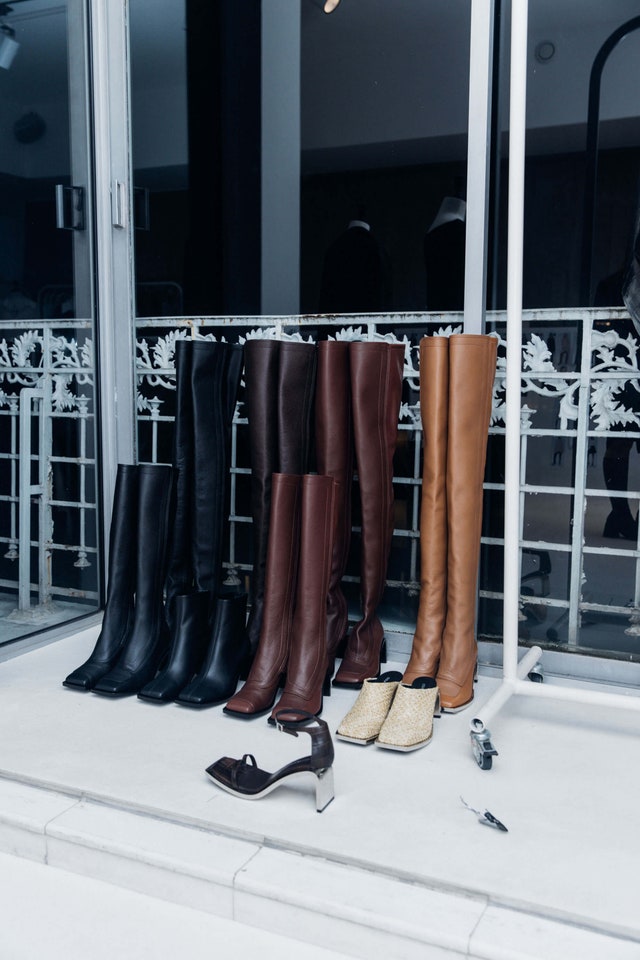
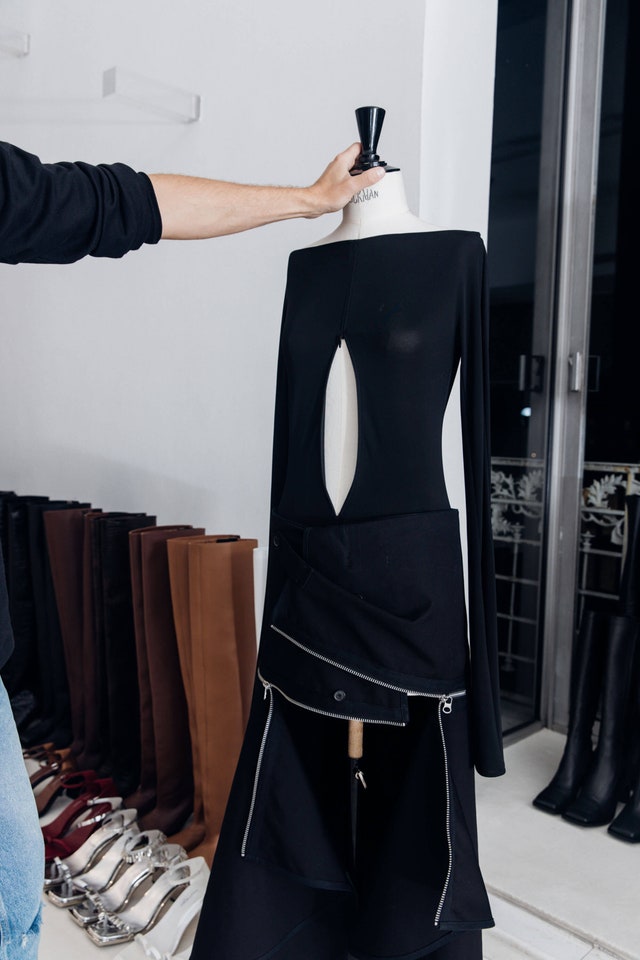
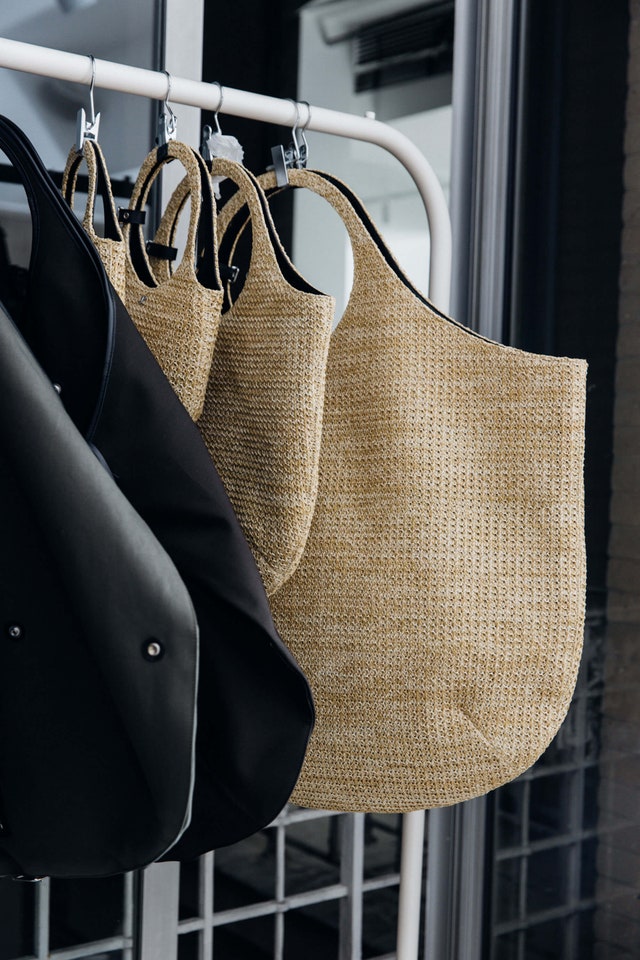
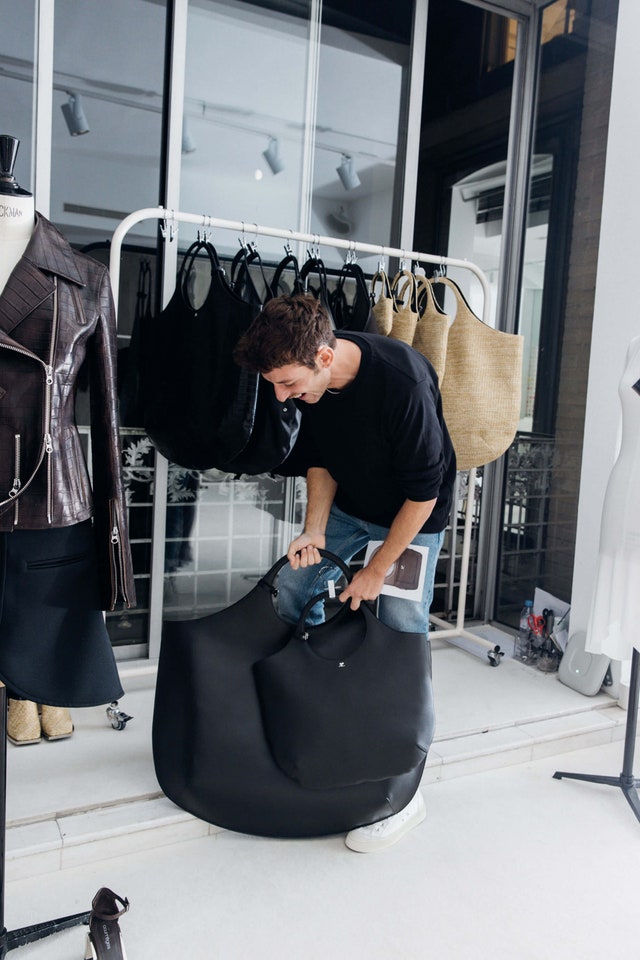
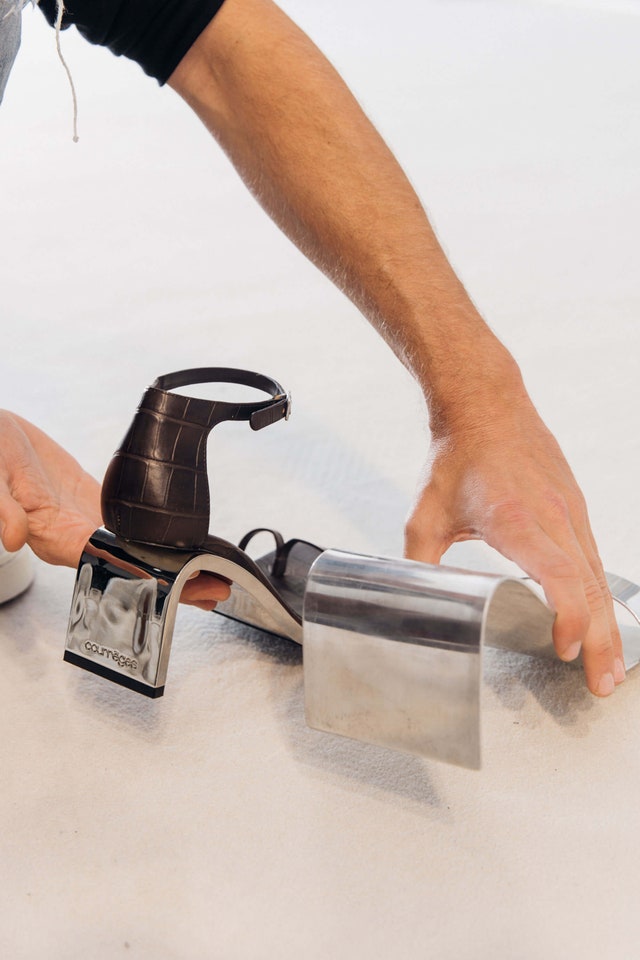
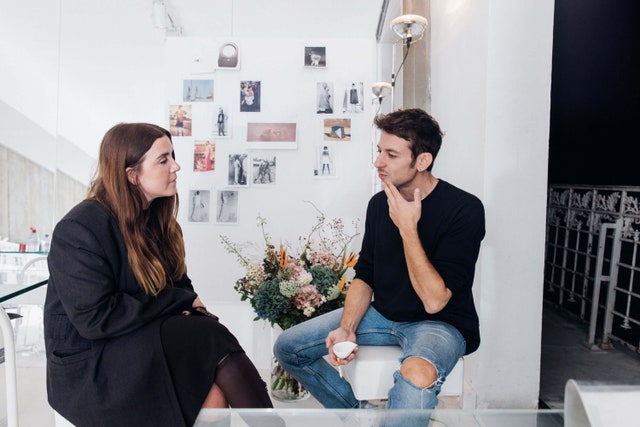
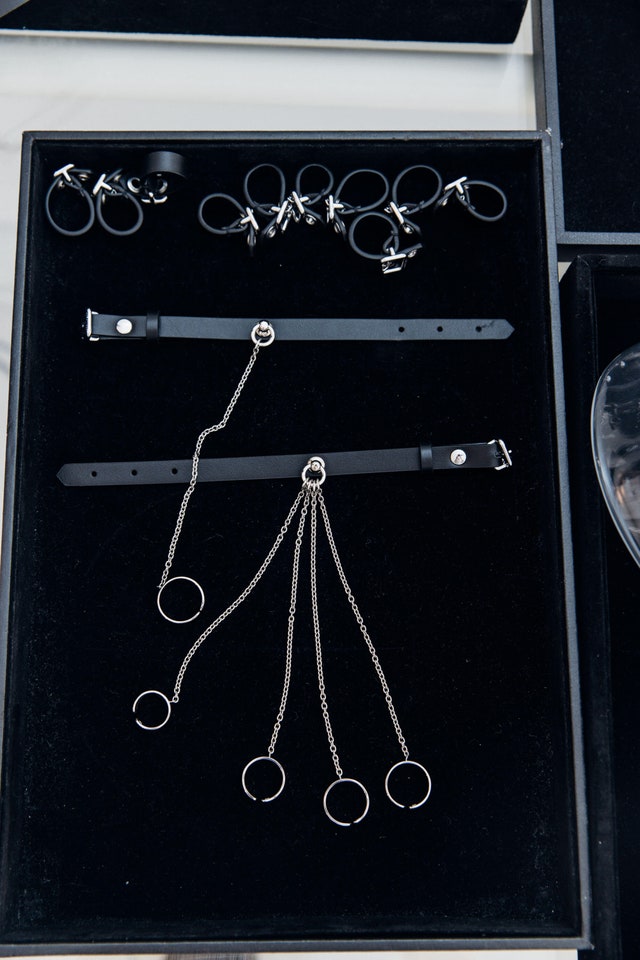
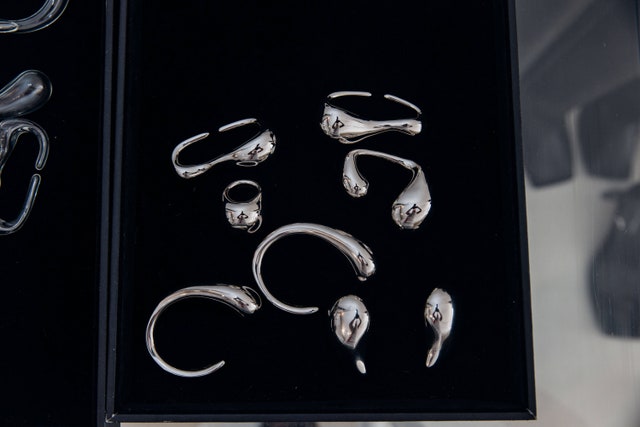
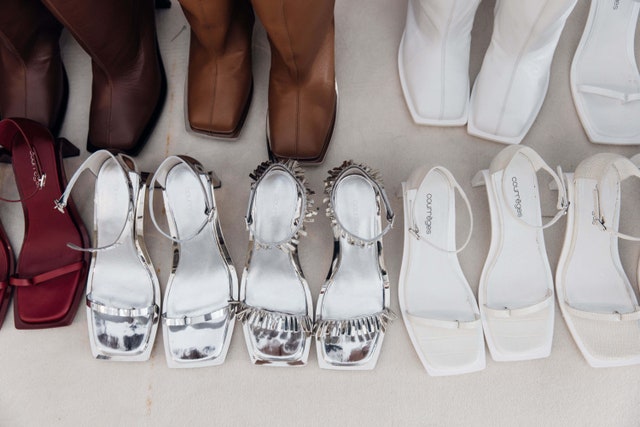
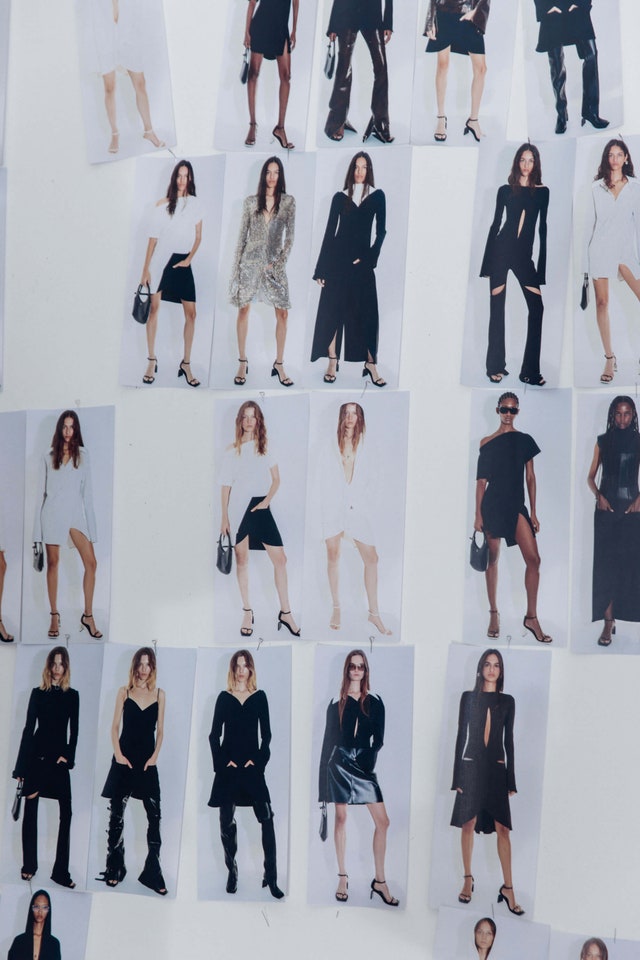
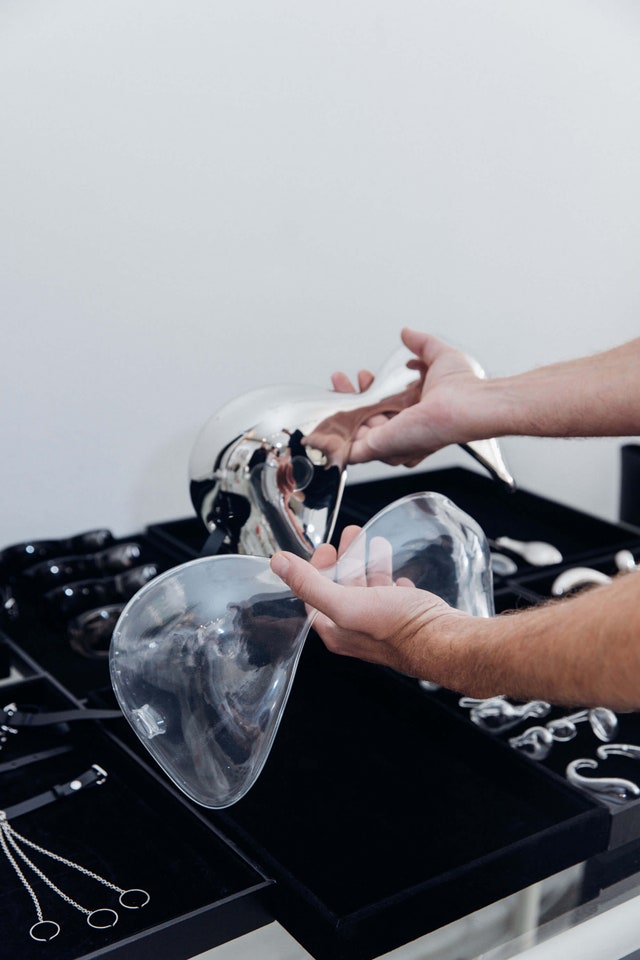
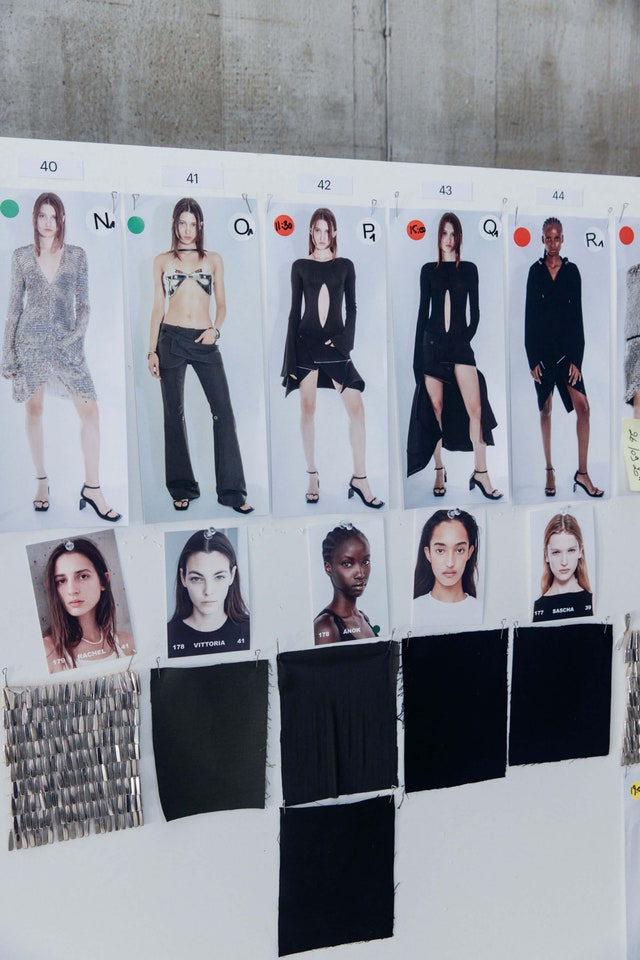
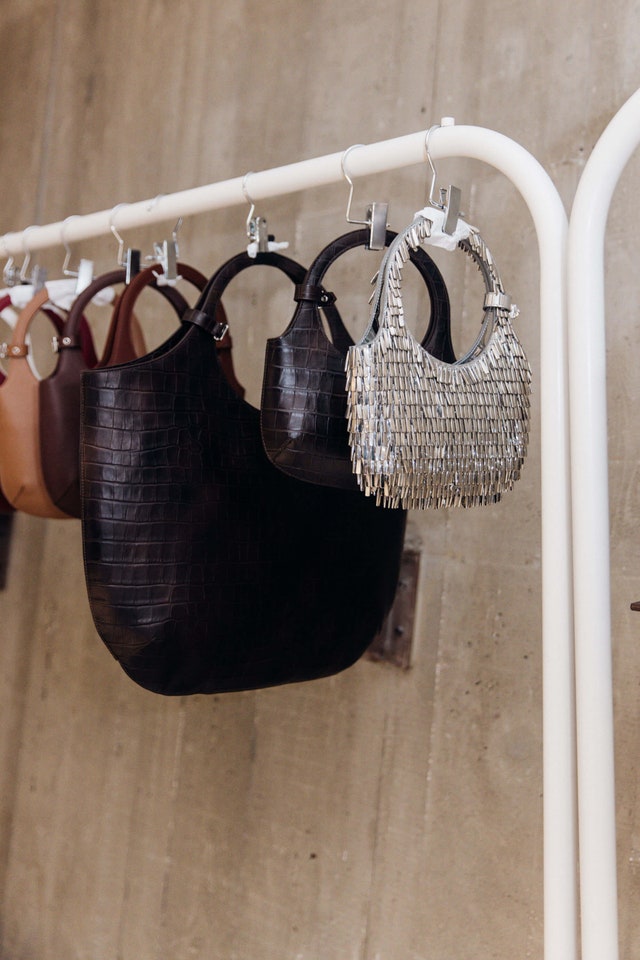
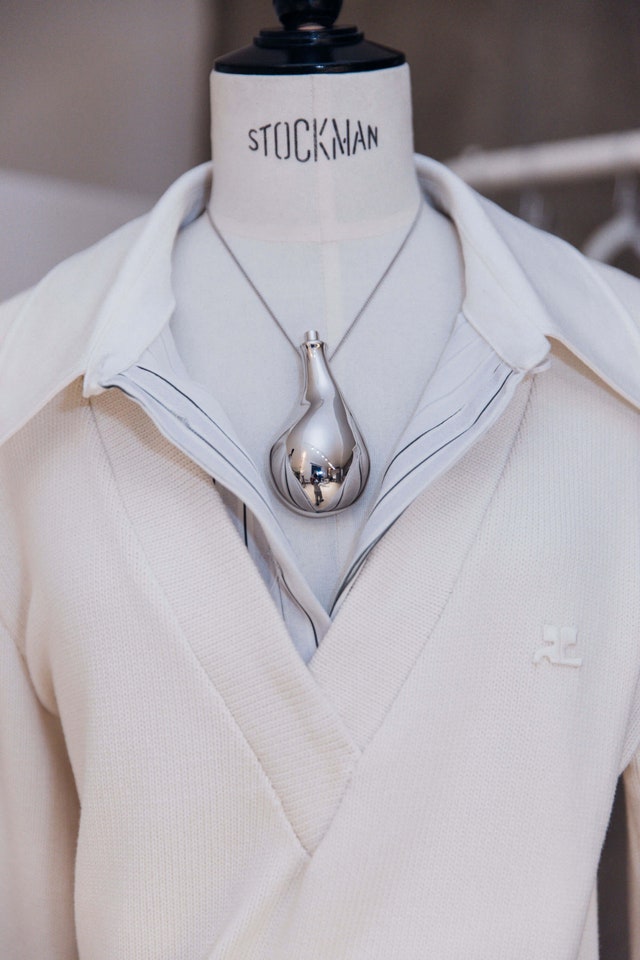
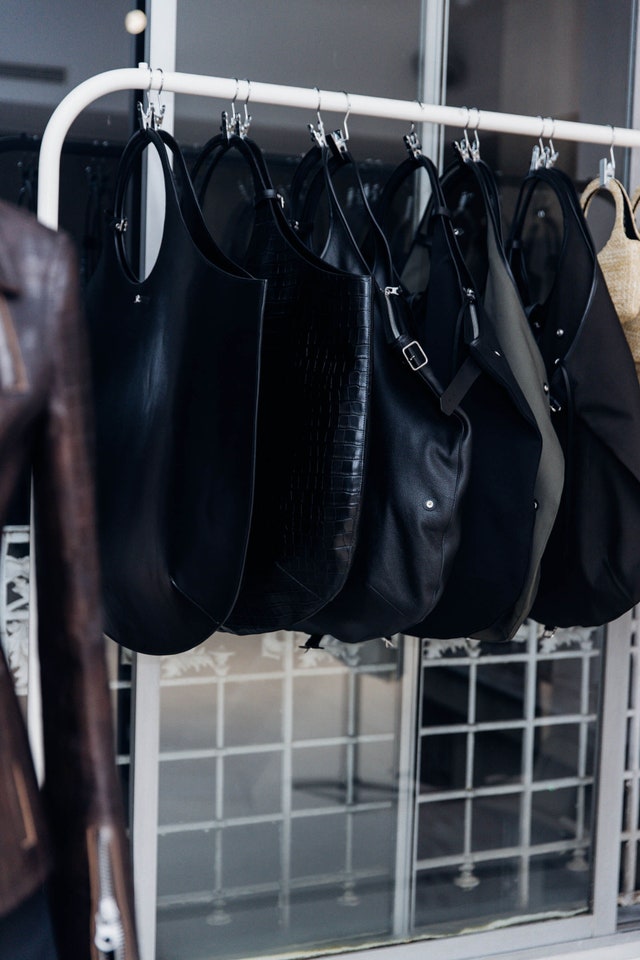
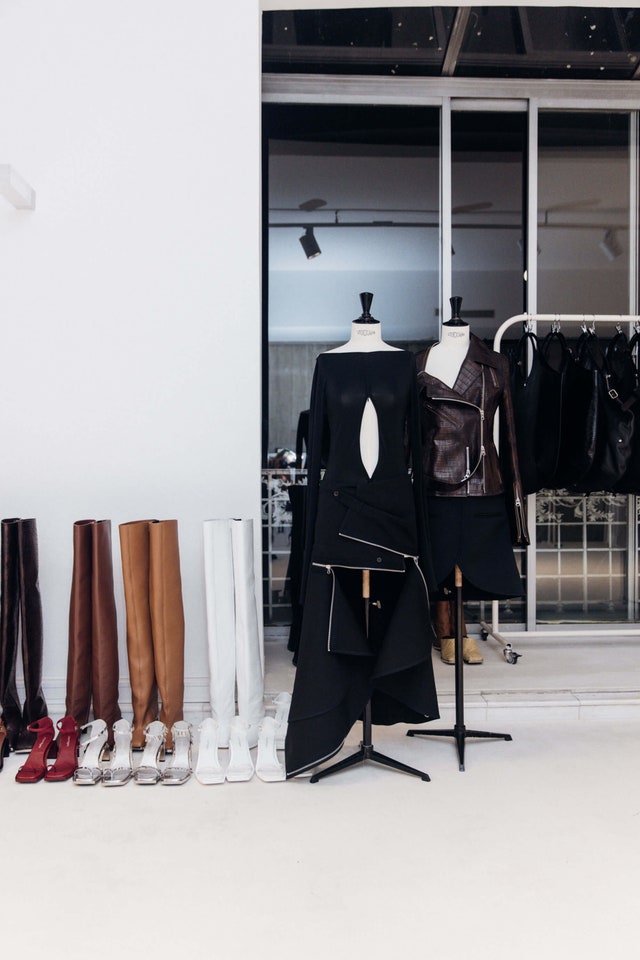
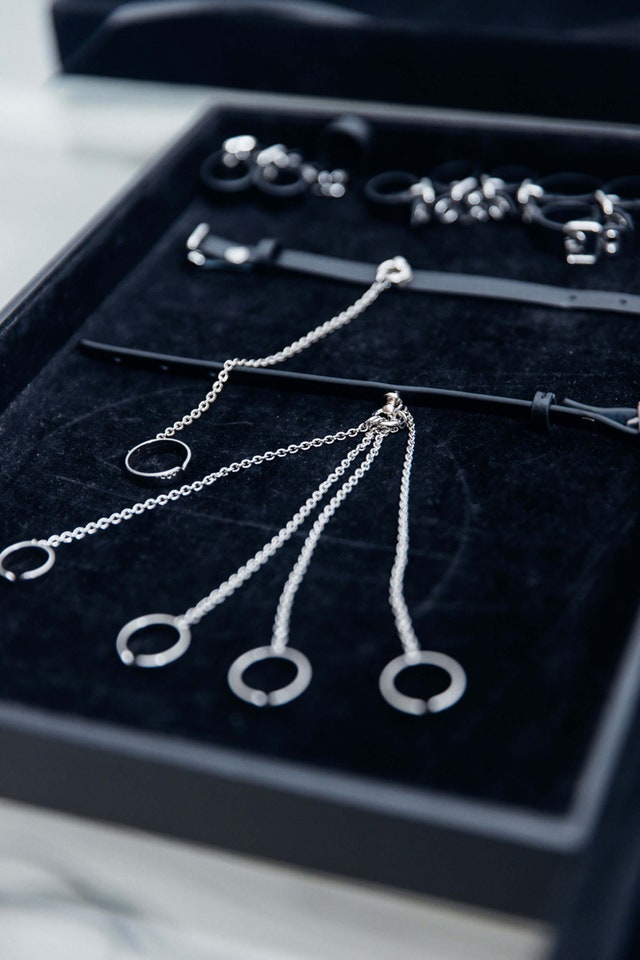
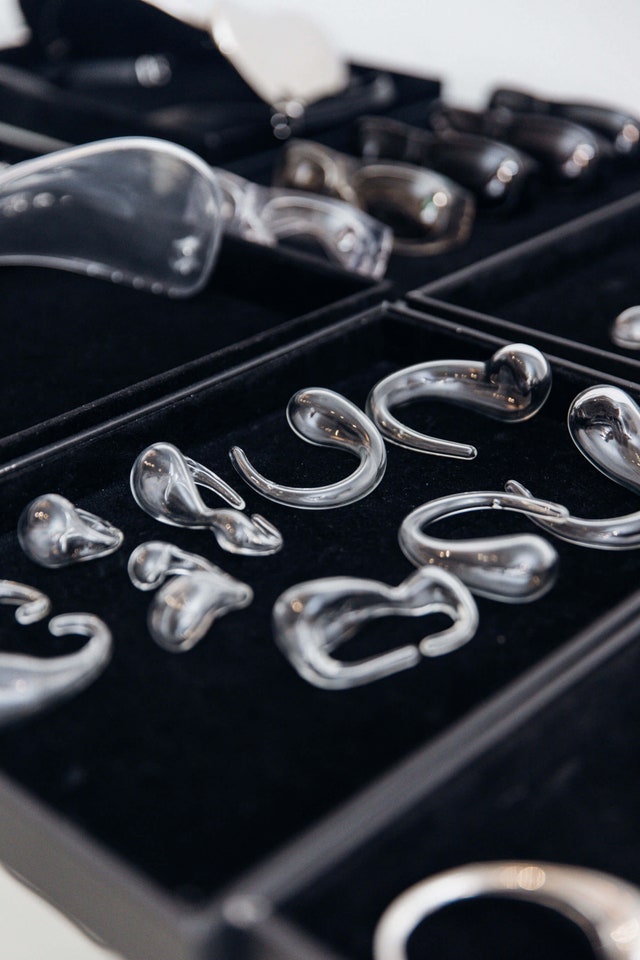
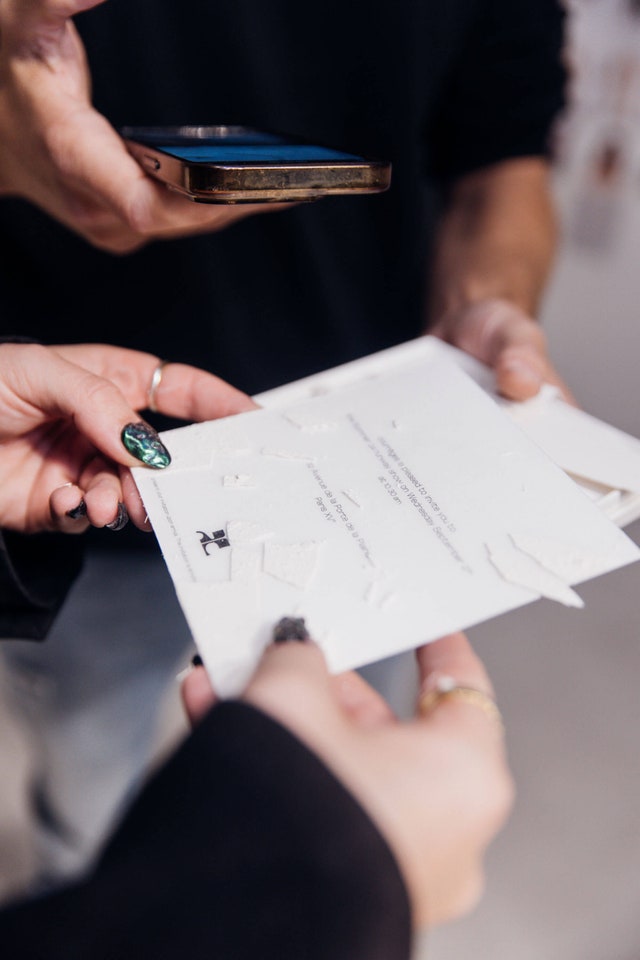
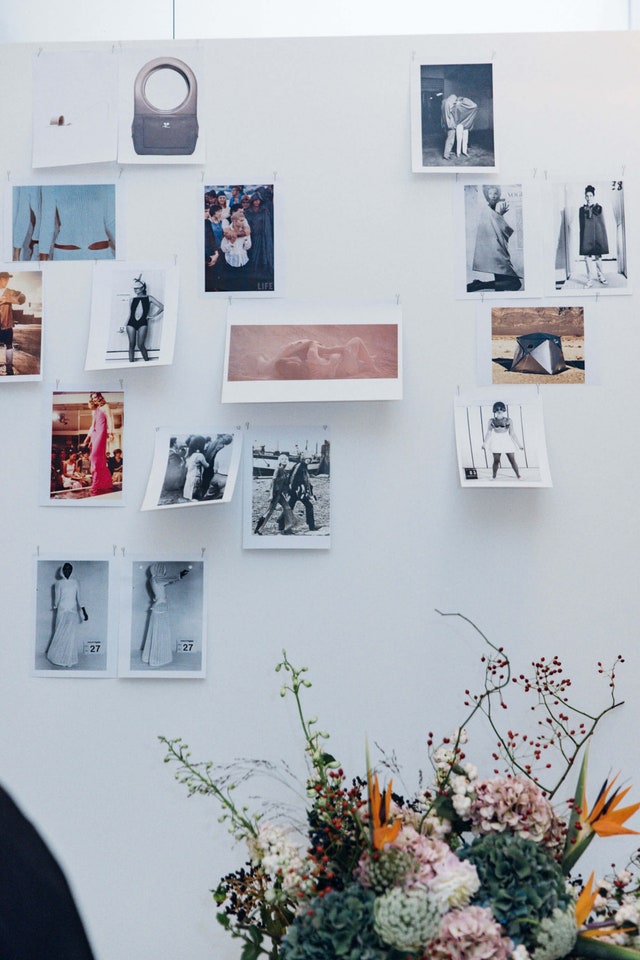
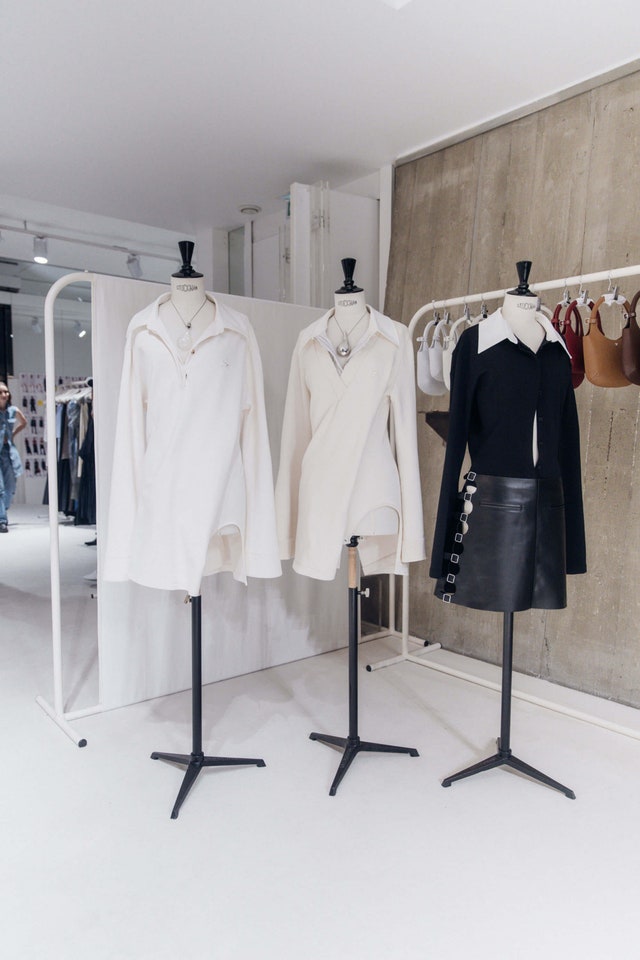
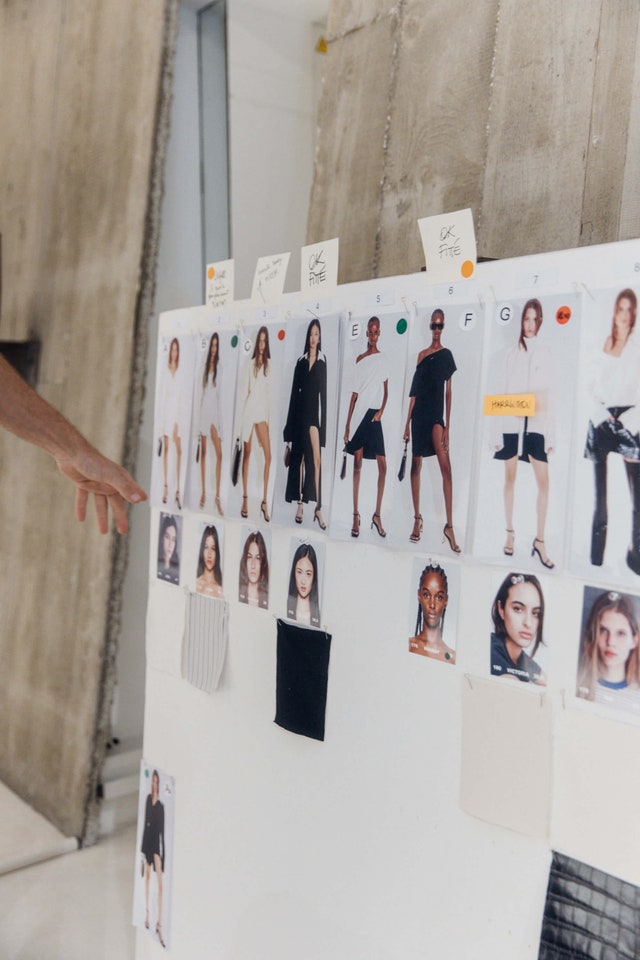
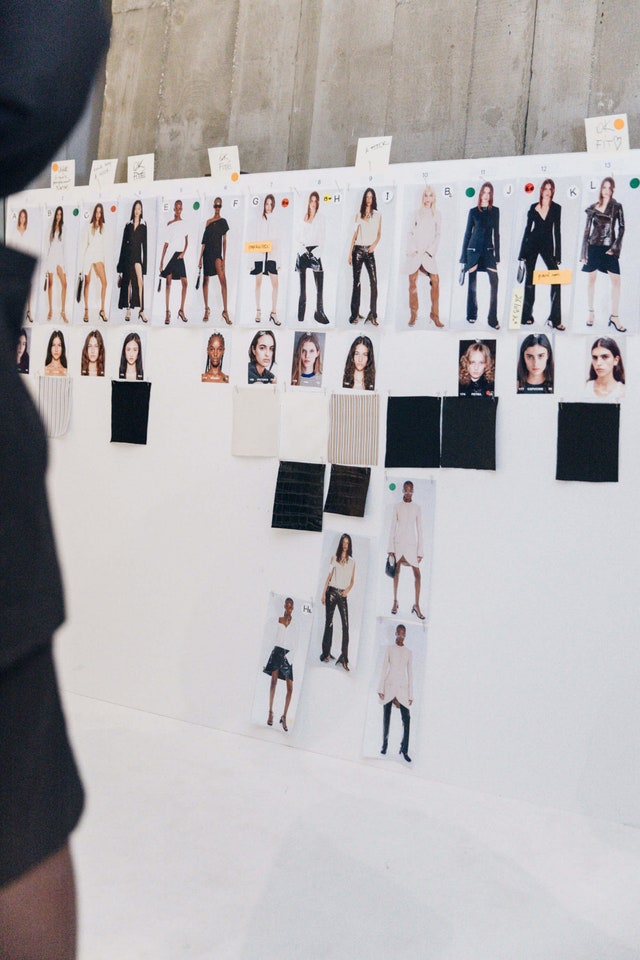

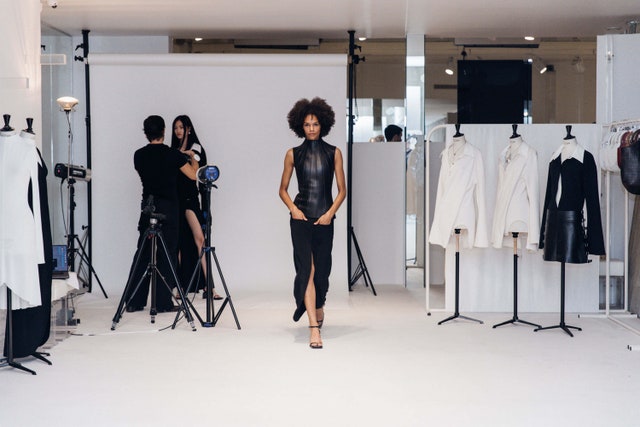
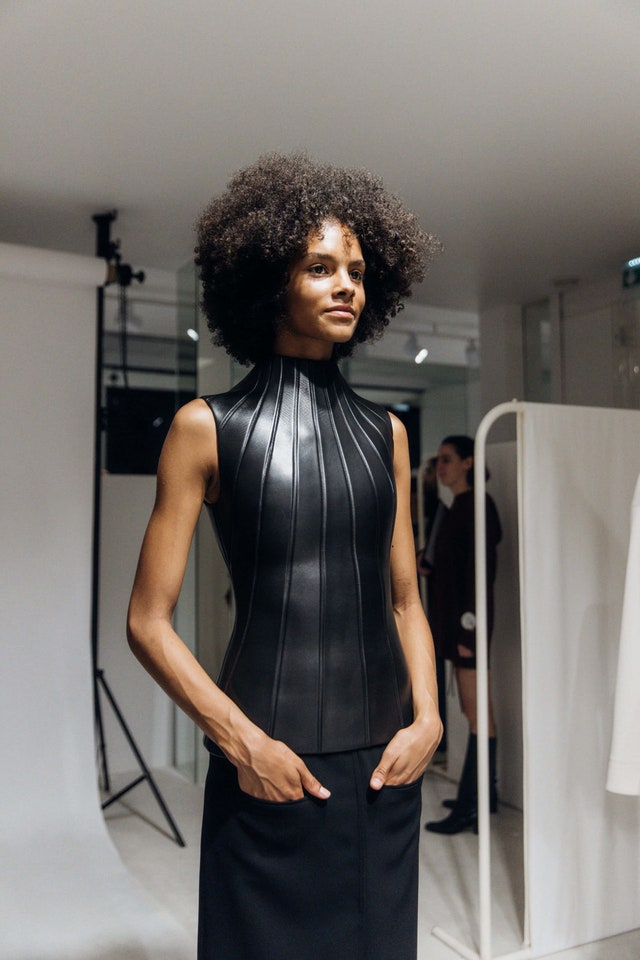
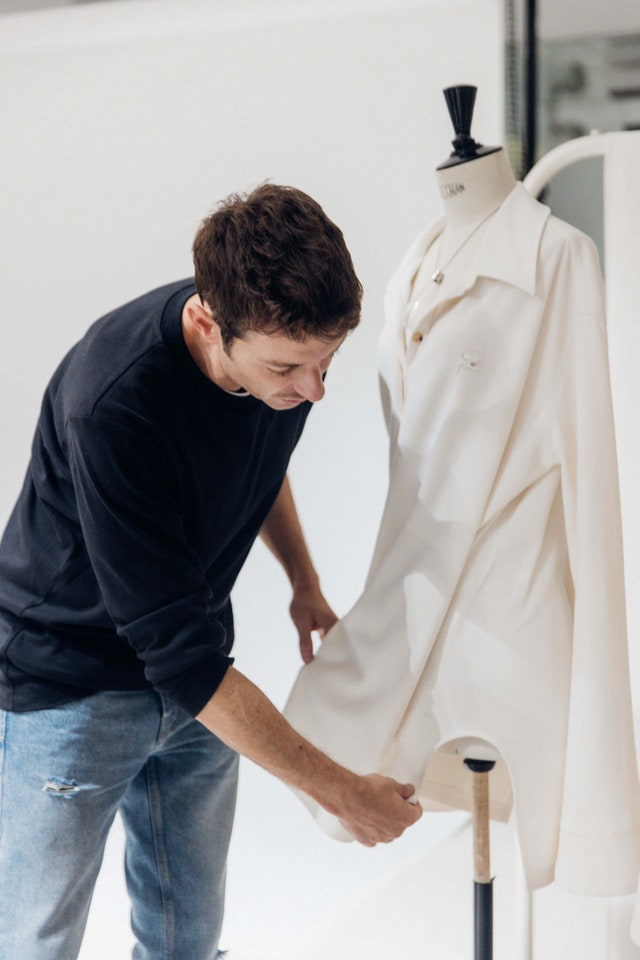
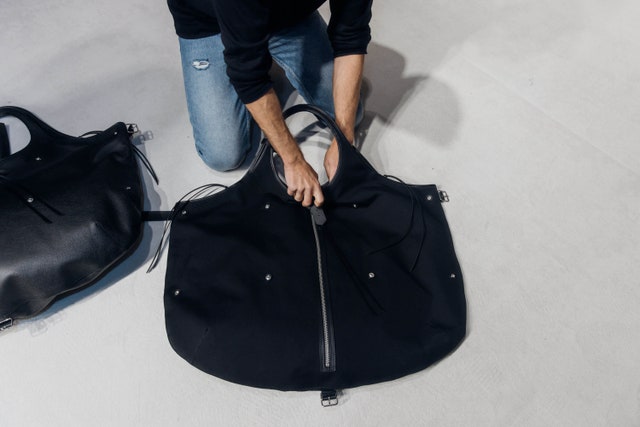
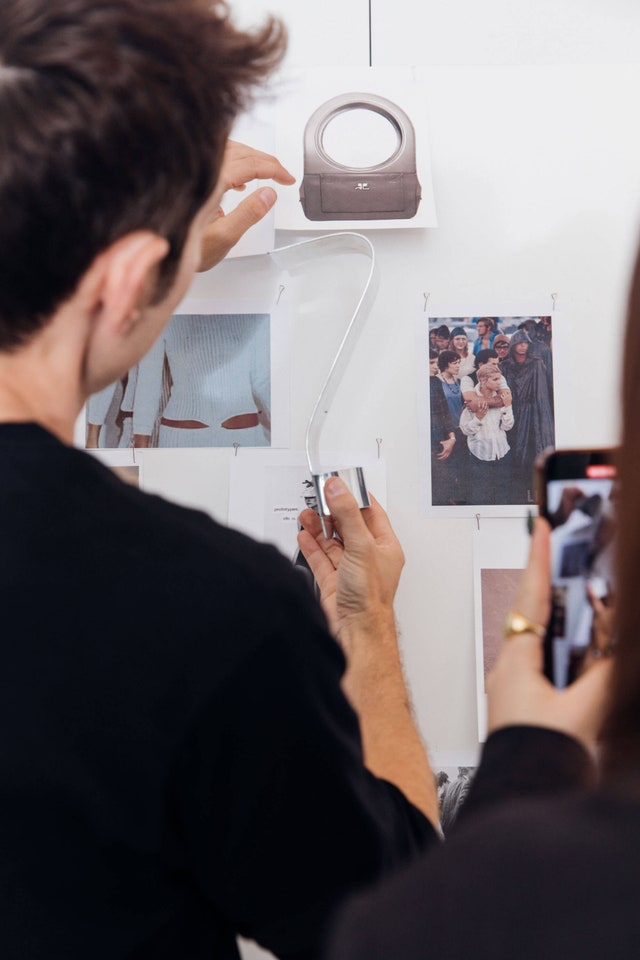
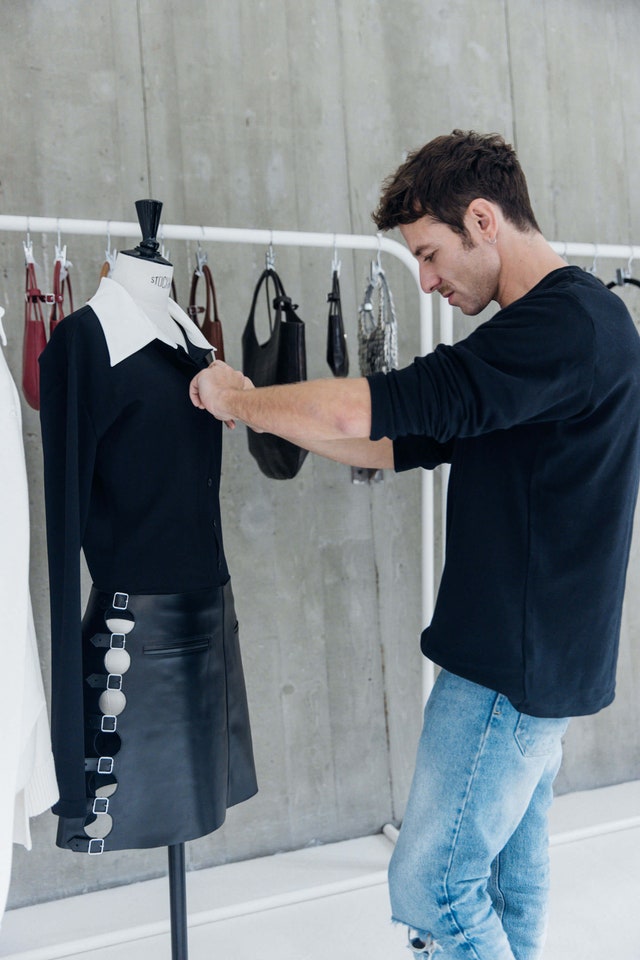
Source: VogueBehind the scenes of Courrèges’s ground-breaking show
Courrèges is in ‘hyper-growth’ mode, bolstered by iconic products, VIP dressing and its buzzy shows. Vogue Business tracked creative director Nicolas Di Felice in the run-up to the SS24 show, where models made cracks in the floor as they walked.
BY LUCY MAGUIRE
PHOTOGRAPHY BY CHRISTINA FRAGKOU
September 27, 2023
Courrèges broke new ground at Paris Fashion Week on Wednesday with the help of the first model, whose first step on its Spring/Summer 2024 runway caused the floor to crack.
Made of plaster and designed to look like moon rock, the flooring was underlaid with inflated zig-zagging fireman hoses. As the show progressed, the hoses were deflated in time with the music to create the dramatic crack effect. The show invitation teased what was to come, made from the same plaster that had to be cracked open to access the address: an exhibition centre in Porte de Versailles, on the edge of Paris.
For creative director Nicolas Di Felice, the moment was likely followed by a sigh of relief. On Monday night, the Belgian designer was still in fittings at his studio, explaining his plans for the show as models walked in and out of the room. “Please think of me, I’m going to be so scared!”
Di Felice is no stranger to in-show stunts. At his SS23 show, sand fell from the ceiling like an hourglass into a void in the floor, timed to pulsating bass. Last season, models emerged from a fog, illuminated by the blue light from a phone. This show is the brand’s “most minimal” of the last three years, with a simple effect, Di Felice says. It took place, as with all of his shows, in a constructed all-white box.
When Vogue Business first visited Di Felice in his studio two nights before the show, it was 8pm, techno music was playing, and, between answering questions, the designer periodically watched models walk and turned to his team, asking, “Is that length right?” or remarking, “Jolie, non?” Di Felice was seemingly relaxed, smoking out of the window while we talked. But he was still waiting for 10 big pieces to be finished for the show, which always causes a bit of anxiety. “Sometimes, pieces are not perfect when they come, and I am stressed that they’re imperfect, and it’s too late,” he says. “Even if I’m the only one to notice.”
Di Felice joined Courrèges from Louis Vuitton in 2020, shortly after new CEO Adrien Da Maia, as part of a turnaround plan for the heritage house founded by André Courrèges and his wife Coqueline in 1961. Since his first show, Di Felice has repositioned the label for a younger audience: the clothes became edgier, the parties more underground, and the shows bigger and more conceptual. On the business side, Courrèges lowered the price of its re-edition collection of carryover styles like its vinyl jacket, aligning with newer labels like Coperni and Jacquemus. (The main line is more expensive, with prices gradually increasing to better align with heritage houses, Da Maia says).
The last time Courrèges spoke with Vogue Business in 2021, it was all systems go on turning the business around. “Today, I’m very proud and happy to say that the turnaround succeeded,” Da Maia says. “We’re looking now at a very different Courrèges than when I joined more than three and a half years ago.” Courrèges doesn’t share revenues, but Da Maia says the company has hit triple-digit growth annually in 2021 and 2022. It’s set to double its business this year. Courrèges declined to share if the brand has yet reached profitability.
Shows were “absolutely instrumental” in the growth and repositioning of the brand in the industry and attracting a younger audience, Da Maia says. “Shows are actually where we decided to invest the most,” he says. “Nicolas comes from the school of Balenciaga, Dior [where he held designer roles]. He had it in him to create great shows not just for production but also in terms of concept.” (Courrèges worked with French production company La Mode En Images on the SS24 show, which also produces shows for these major brands.)
When it comes to the casting, models of the moment like Mona Tougaard, Vittoria Ceretti and Anok Yai typically walk the shows. For SS24, Di Felice added French it-girl Deva Cassel. A partygoer himself, Di Felice soon roused the Paris club scene to Courrèges. After every show, they assemble for the after-show party Courrèges Club, typically held in a car park until the early hours.
Courrèges show collections are intentionally wearable, meaning they show “objects of desire” that buyers can buy into in the showroom, Da Maia says. “From the very first season, there’s a strong connection between the desire we created in the shows and the actual piece you can actually end up buying in the store.”
Accessories are a key part of Courrèges’s growth strategy, and the segment has been performing well, he adds, though ready-to-wear is still the main revenue driver. For SS24, Di Felice is launching a new bag, modelled on an archival bag from André Courrèges. It comes in a huge array of sizes, rendered in leather, textured leather and raffia. Most notable is the supersize version, around a metre in diameter, which can be buttoned down into a tote bag or small shoulder bag, as Di Felice demonstrates on the white floor of the studio.
Courrèges’s SS24 show was inspired by the idea of a woman graduating from university and going on a road trip, gradually loosening up and unravelling as she reaches the desert, where she “finds a cult run by mothers”, Di Felice explained, gesturing to the progression of looks on the board.
“I always need to have a story around the collection because I am so technical as a designer. It helps me make decisions.” The collection features modular cream varsity-inspired sweaters, second-skin bodysuits with generous cutouts, and shirting that can be done or undone, depending on the wearer’s mood. The asymmetrical skirt worn by Tougaard is made from vintage tents, and it even looks like a flat-packed tent when laid flat, which Di Felice illustrates. “It’s part of the story,” he says, “this is the moment when she’s meeting the cult.”
Linking Courrèges’s heritage with the present/b/
His shows might be conceptual, but Di Felice is proud that his Courrèges collections are wearable and designed to sell, without lots of showpieces you might see at other heritage labels. “My mission is to resurrect this house again, but as well to resurrect the business — let’s not lie,” he says. “I was aware that if I want to do more and more, we have to make the house healthy again, and get it back on track. Then I can do bigger shows, [secure] higher development budgets and show even more creativity.”
Courrèges’s heritage is often associated with the 1960s space-age aesthetic, clean lines and bold colours pioneered by its founder. However, the brand has had a tumultuous history since its 1960s heyday. In 2011, it was purchased by ad executives Jacques Bungert and Frédéric Torloting, who tapped Coperni duo Arnaud Vaillant and Sébastien Meyer in 2015. They exited in 2017 to launch Coperni, and in 2018, minority shareholder (Kering investment arm) Artemis acquired the brand outright, appointing Da Maia and Di Felice two years later.
They both inherited a lot of expectation. Di Felice is used to the question about balancing Courrèges purists with its new young audience. And answers deftly that the through line between Courrèges’s heritage and present is the technical: stitching, materials, the thickness of the crepe. “If you see vintage Courrèges, that means it was worn and bought,” Di Felice says. “This is part of the history of the house. Andre Courrèges didn’t just talk about creating clothes for the moon, he wanted to dress people in the street.” The brand’s vinyl jackets and miniskirts, reissued as carryovers under Di Felice’s watch, have become bestsellers, spotted on celebrities including Selena Gomez and Dua Lipa and Gen Zs in the streets of Paris alike.
Already, Courrèges is gradually growing its team from season to season, making it easier and easier. “We are still building a team, so for now, everyone does a little bit of everything,” Di Felice says. The brand hired a collection director last year to help Nicolas. And two weeks ago, Da Maia appointed Therese Lundström, the brand’s first CMO since Da Maia and Di Felice took over.
As Courrèges continues to reinvent, shows like today’s are crucial to boosting visibility in newer markets like Japan and Korea. “In the short term, you’re going to see us expanding in the US, APAC and France — consolidating the markets that we already see strong demand with while planning for future expansion in other cities in the coming years,” Da Maia says. Menswear is another frontier for expansion. The men’s business is growing, Da Maia says, which could mean a men’s show in the future, though there are no current plans.
For today, the focus is on reaction to the womenswear show. Courrèges was in the top 35 brands globally in terms of media impact value for Q2 2023, Da Maia says, per brand marketing platform and data analytics firm Launchmetrics. “It’s really the shows that created this spike and the spark all the time, and SS24 is going to be one for the books.”
The night before the show, with around 14 hours to go, Di Felice was late from casting. “It’s always difficult when the girls have other shows,” he said, “but we’re almost there.” When he arrived at the venue, he wasn’t happy with the floor, and the lighting needed some tweaking. “It won’t look like this; it’s too neat right now,” he comes over and assures. “We’re going to put more debris and dust on it.” After a deep exhale, he smiled, “I’m trying to stay calm.”
Correction: A previous version of this story said Courrèges lowered prices. The story was updated to reflect that it only lowered the price of re-edition pieces.
The accompanying photoshoot:






























LadyJunon
Well-Known Member
- Joined
- Aug 17, 2020
- Messages
- 4,170
- Reaction score
- 8,763
Nicolas Di Felice for BoF:
Source: BoFFrom the Moon to Earth With Nicolas di Felice’s Courrèges
‘I like the idea of a house linked to a form of utopia, of a shared project,’ said the designer, who will mark three years leading the space-age brand at his Paris Fashion Week show Wednesday.
By LAURENCE BENAÏM
27 September 2023
PARIS – A monochrome atmosphere, its white intensified by the reflection of mirrors: We are not in heaven, but rather the fifth-floor design studio of creative director Nicolas di Felice at Courrèges.
Here, there is no disorder — only lines and rigour, white and mirrors, leather, coated cotton, and patch pockets. A century after the birth of founder André Courrèges, history feels brand new.
“Courrèges, it’s an attitude, a way of being, of moving, of dancing. I see grown-up girls walking, discovering new worlds,” said the 40-year-old designer, who took the helm of the brand at 40 rue François Premier three years ago.
Since the designer’s arrival, the brand (which operates separately from Gucci’s parent company Kering as part of the Pinault family’s Artemis fund) has more than doubled sales each year. A couturier who operates with sartorial precision while drawing inspiration from techno music, dance performances and nightclubs, the Belgian native first bonded with François Pinault père over a love of contemporary art.
“I like the radical side of the void; I need it to make things exist,” Di Felice said.
Still, the designer has worked to renew the ties between space-age Courrèges and the Earth today. Appointed during the pandemic, Di Felice launched his tenure with an indelibly pointed campaign: “Courage,” read t-shirts and social media posts in the brand’s iconic font.
At his show during Paris Fashion Week on Wednesday, Di Felice is set to propose the brand’s latest wardrobe for gravity-defying Amazons. Traditional fibres like silk or double-crepe are blended with innovative silver materials, 3D-printed bras and blown-glass details.
Di Felice’s career has included stints at Balenciaga (where after being hired as a junior stylist, he stayed for 10 years), Dior with Raf Simons and Nicolas Ghesquière’s Louis Vuitton. Still, professional maturity has not diluted his work’s emotional charge. “This collection is perhaps the most personal,” he said of Spring 2024′s line-up of around 40 looks, in which Courrèges’ linear silhouettes are infused with a unique brand of romanticism.
Laurence Benaïm speaks to the designer for BoF.
LB: “We need to invent modern clothing, clothing that we enter into like a box,” André Courrèges once said. How can we reconcile this vision tied to the 1960s with contemporary issues?
NDF: The worst thing would be to try to copy, to parody, to try to resurrect what no longer exists. Nothing ages a brand more than imitating itself. The blowing dessert wind, which we hear in the soundtrack we composed with my friend Erwan Sène, is a sensation: It represents the idea that we must remain open to the spirit of the times.
LB: What keeps you moving forward?
NDF: It’s the job itself: cutting, working on a model. The workshop is on the ground-floor, next to the boutique. The stylists are on the first floor, administration, merchandising and e-commerce on the sixth floor. We are in constant exchange, and this internal communication as well as the location itself is very inspiring. Everything is open, everything breathes. We do not remain stuck in a caricatured vision that would freeze the DNA of the brand.
We recently renovated the flagship store—adding mirrors everywhere including to create a sort of infinite fitting room. I love mirrors: they open spaces, deconstruct them.
LB: How do you grapple with the futuristic — or now maybe retro-futuristic — identity of Courrèges? His vision of the future was inspired by the race to the Moon, and yours?
NDF: I think Courrèges was very concerned by what was changing around him. It was the 60s, there was the euphoria of consumption, of having the best of all worlds. I like the idea that this house is linked to a form of utopia, of a project.
His strength is to have known, after ten years at Balenciaga, to adapt the rigor of lines to a new vision of the body in movement. White pants, jackets, dresses, miniskirts were like mobiles spinning in space.
My vision is radically linked to living together, to tolerance, to togetherness here on Earth rather than the Space Age: Accepting differences, whether linked to nationality, physical appearance, or sexuality.
LB: When you talk about “André,” what does he mean to you today?
NDF: We’ve all seen the same handful of images from his work so many times, whether we know his story or not. But André Courrèges remains a pioneer: a house that was created by two people who loved each other. I watched all his interviews repeatedly. Even if I immediately responded to the simplicity of his lines, the serial side of his work, his legacy is not limited to a few images.
LB: How are you orchestrating the rebirth of the brand?
NDF: At the very beginning, we were still reissuing iconic pieces. Everything was done in a structured manner, step by step. So that the house could allow me to express myself, we had to reorganise, to redefine an identity.
From now on, there are no more reissues in the collections. For three years, we have more than doubled sales each year. We have expanded the distribution in France and internationally, notably opening a store in Seoul, and another in New York in 2022. We will continue to grow in Paris and Asia, with an expansion planned in China. In the meantime, we are launching three new fragrances this winter: Hyper Oud, Hyper Musc, Hyper Cuir.
LB: What about the materials used, the structured and slim Courrèges style?
NDF: In this season’s show, there will be almost no more vinyl. The one we use now is in fact a polyurethane “coating” mainly of plant origin which gives shine: the base is cotton.
The cut of the garments has evolved gradually, too. But the Courreges style is always present in the details which naturally punctuate a look: like applied pockets, which are found throughout the collection, topstitching, ellipses and rounded geometry.
The silhouette has evolved, while still being recognisable. We even go as far as oversize, so long as it still feels contained: I am thinking of a jacket which is a variation of the Scuba Biker from the archive.
Everything is clear and at the same time becomes more fluid. Embroidered tone on tone, the logos are increasingly discreet.
I don’t copy anything. My job is to reinterpret.
LB: What was it like to meet the brand’s owner, François Pinault, for the first time?
NDF: I will never forget his eye, the eye of a great collector, self-taught. He’s a builder, curious about everything. His first question was about my favourite artists. I said, I think Tracey Emin, Jenny Holzer.
He is betting on youth. He can change destinies — I’m the example of that, personified.
LB: It seems like music is very important to you. Why is that?
I come from a world where fashion did not exist. In the Belgian countryside, we didn’t have Vogue. My father is an engineer, my mother has a travel agency.
For me, everything came through music. I had an older sister who listened to rock, and covered her room with metal posters.
Music built me, it’s part of me. A piece of music corresponds to a piece of your life. It is the only art that can touch all the senses: in concerts everyone vibrates on the same waves.
As a teenager, I understood that you could shape your style through music and clothing. Carnival was normally every year. But I loved to dress myself up and dress up other people often. I did music theory, clarinet, piano. I was also a Scout: my parents tried to exhaust me.
I remained a go-getter.
LB: And where do you want to go?
On Earth—in nature, with people I love, plants and flowers. Nature gives us the measure of time, of waiting, of joy. In 2008, as a junior stylist at Balenciaga, I bought a plant at the end of a supermarket checkout, it became a magnificent tree. Recently, I took almost an entire day to clean it leaf by leaf.
LB: What concerts are you looking forward to?
There’s (La) Horde’s next performance. Then Blonde Redhead, from whom I tattooed their favourite song title on both my legs: “Futurism vs Passéism”. I love when they sing, “The most important time is the first time, The most important time is the second time. And after that, the third time. And we start again.”
Note: This interview translated from the original French has been edited and condensed.
jeanclaude
Well-Known Member
- Joined
- Feb 12, 2012
- Messages
- 3,826
- Reaction score
- 9,700
Those Elsa Peretti rip-offs are vile!!!Nicolas Di Felice for Vogue:
Source: Vogue
The accompanying photoshoot:
D
Deleted member 7575
Guest
I like him,I like what he's done with Courreges even though the clothes are not my personal cup of tea.
I am excited for JPG.
I am excited for JPG.
D
Deleted member 7575
Guest
That was my thought, too, until I looked closer and realized they are actually transparent, like irregularly blown glass, and not sterling silver.Those Elsa Peretti rip-offs are vile!!!
alwaysademo
Well-Known Member
- Joined
- May 25, 2024
- Messages
- 425
- Reaction score
- 758
all the cool girls are wearing his Courreges.
LadyJunon
Well-Known Member
- Joined
- Aug 17, 2020
- Messages
- 4,170
- Reaction score
- 8,763
Nicolas di Felice on his collection for Gaultier that will be presented later this evening:
An image of one of the looks from the collection:
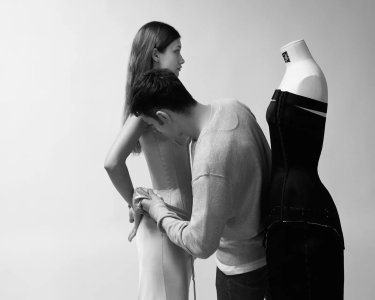
Vogue
Vogue“He Was the Precursor of Everything We See Now”—Nicolas Di Felice Gets Candid About His Jean Paul Gaultier Couture Collaboration.
BY MARK HOLGATE
June 25, 2024
Last week, Nicolas Di Felice, the artistic director of Courrèges, posted to Instagram Stories a video he had taken of the Paris skyline at night, his camera slowly panning across the city. Di Felice had taken the video from a vantage point relatively new to him: the roof of the Jean Paul Gaultier atelier on Rue Saint Martin in the city's Marais neighborhood, where he has been working since late last year on his vision of haute couture for the house. It will be shown tomorrow amidst the other fall 2024 couture shows, with Di Felice joining the ever-growing roll call of designers who have guested at Gaultier for one season, including Haider Ackermann, Simone Rocha, Glenn Martens, and Olivier Rousteing.
Di Felice’s video couldn’t have been a more cinematic — or evocative — curtain-raiser on what it means to design the couture for one of the most iconic designers ever. Put simply: It means that you’re at the very pinnacle of Paris fashion. Gaultier, after all, is the designer who made Paris cool in the 1980s (snatching the crown from London) with his insanely influential collections which, over the years and decades, riffed on everything from underwear-as-outerwear, with all its corsetry lacing and pointy bras, to pinstripe tailoring, tattoos, traditional Hasidic dress, Breton stripes, punk, piercings, Mongolia, and Folies Bergère feathers—all of it worn by everyone from Madonna to Neneh Cherry, and all the while becoming a pop cultural icon in his own right. The designer worked with director Pedro Almodovar, co-hosted the cult British TV show Eurotrash (divinely hilarious; go YouTube it) and, in 1989, recorded his very own pop song, “How To Do That,” more of which later.
Gaultier is, says Di Felice, someone whose power to inspire is undiminished. “Jean Paul has always expressed a lot to people,” he told me. “He passed by the opening of the new Courrèges store last night, and everyone was like ‘Ahhh!’ You talk to designers of my generation, to the young generation, everyone, he’s a star. When I was a kid, he was the only famous designer in the countryside, because everyone would wear his perfume—men and women—and he was on television because he was dressing Madonna. And honestly,” Di Felice went on to say, “Jean Paul really showed for the first time queer communities, different ethnicities, different bodies—he was the precursor of everything we see now. And it’s really Paris as well, you know? For me, if I have an image [of what Gaultier has done], it’s like I’m coming to Paris to be myself.”
Di Felice is telling me this via Zoom. We're chatting because we're previewing his couture for the label, an exercise which requires him to find a connection strong enough and powerful enough to tell the story of his vision of Gaultier—the man, the designer, and the house—and do it all at once, for one time only. (“I always say, One season at a time—I can always keep something for the following season,” said Di Felice, “but not this time.”) Clearly he feels no lack of personal connection. And also, as the preview went on, it’s clear he felt no lack of aesthetic connection—or inspiration—either. Of course, given this story you’re reading is a preview, it can only say so much, because… you know, umm, spoilers. If you want to get the fullest look at Di Felice’s exceptional Gaultier couture, you will have to go read Nicole Phelps’s review and then study each of the 32 (at the time of writing) looks he’s going to show. But because I hate to be too much of a tease, here are some words to mull over until then: undress, gazar, slash, sleeves, leather, and hook and eye. That’s it—and even now I probably said too much. (You also get a little sneak peak below!)
What we can talk about is the route Di Felice took to arrive at his Gaultier couture. From the minute he started work, it quickly became apparent to him, he says, that what would be challenging was, “deciding where I wanted to go—because obviously I really dug into the archives big, big time. I mean, I have loved his work for a long time, so I knew lots of pieces. I even found images of Jean Paul’s first, first collection—he doesn’t even have that many pictures of him himself. All of a sudden, I was seeing a show from the ’70s which was really amazing. And he did so much that was interesting. Not just the couture, but Junior Gaultier, Soleil, the jeans…. He was so prolific that I didn’t want to be inspired by only one collection, or a certain iconic look. I thought about what really touched me, and what made sense to the way I work. As I did this collection, I learned about that every day.”
What Di Felice knew from the outset was that he himself was not, he said, “a fan of decoration.” Which meant that what so many of us think of as haute couture—insane levels of beading and feathering and embroidering and all that jazz—are really not part of Di Felice’s vision. Again, without giving a whole lot away, there will be some embellishment going on, with the aforementioned hook and eye to the fore—he laughed that the Gaultier studios were buying all that they could lay their hands on. But really what his couture—along with his work at Courrèges—is about is the elemental power of fabric draped onto the body: the alchemical reaction that happens when the two-dimensional meets the three-dimensional. Some of what Di Felice has done might at first glance seem almost like nothing—I’m thinking of one dress (at the time of writing, look 11)—but of course it’s not; it’s quite, quite something, by virtue of all the work to make the outward (the gazar) and the inward (the boning construction) look absolutely effortless. Over the Zoom, Di Felice undid the dress, and it opened like an exhale—as natural and as effortless as breathing: a beautiful piece of workmanship.
“Most of the patterns are really geometric shapes,” Di Felice said. “I am going to show you look 1”—he ran across the studio and pointed the phone to the floor, where it was laid out, utterly flat on the ground—“that’s the feeling I am going for. You can do nice drawings—you can draw, and draw, and draw—but you want to do something outstanding [for couture], and the magic can come from just a simple square of fabric. It’s going back to geometry; it’s a never-ending principle, because it gives you a lot to play with.” One collection he did look at was “Les Touristes Japones au Louvre” of Spring 1999. “The set was a huge red circle, super radical,” said Di Felice. “It’s simple, which I like, but most of all, it’s the amazing way he cut that collection that I like; even if some were really simple gestures, they really touched me.” (Another collection he was looking at, for reasons that will become evident, was Gaultier’s fall of 1986/87, dubbed “Constructivism.” Ditto the “Women Among Women” collection of Fall 1989.)
Of course, when one guests as the designer responsible for the couture of Gaultier, you're following not only in the footsteps of the man himself, but all those who have sat in the couturier seat for one season. “I’m not the first person to do this collaboration, and it was important for me to work around things that are perhaps less-known,” Di Felice said. “Jean Paul never stopped searching and expressing, and it would be a bit predictable to always go back to the same things. The designers who went before me are really talented and have amazing taste, and because we are the same age, [I thought] maybe we’d be drawn to the same things, but that thought didn’t last long.” Di Felice, an inveterate team player, also praised the Gaultier atelier teams for being so brilliant to work with. “They’re passionate and nice people,” he said. “[Always working with new designers] demands a lot of flexibility and intelligence and patience. It’s [a lot] to change artistic direction every six months. I was really curious about so many of the techniques. I learned a lot about myself, and my tastes. And thank God what I wanted to work on [of Gaultier’s past] hadn’t been that touched.”
One less-expected thing that guided him was that Gaultier song, “How To Do That.” “I became obsessed with this one line in the song—‘There is a new way, a new way, a new way’,” Di Felice said. “I don’t want people to think I am saying that I am going to do [my Gaultier couture] in a new way—not at all! It’s something that has just run in my mind since the first day I started because I don’t want to disappoint him. Or disappoint myself.”
An image of one of the looks from the collection:

Vogue
LadyJunon
Well-Known Member
- Joined
- Aug 17, 2020
- Messages
- 4,170
- Reaction score
- 8,763
The reason as to why is very obvious.
Rocha's collection was mostly a series of bustier dresses in pastel-toned lace and tulle. It's like a more glamorous version of MGC's Dior, very pretty, very mass-appeal.
Comparatively, Dossena's collection was much more accomplished in terms of concept, execution and overall breadth, but that comes at the expense of immediate mass-appeal.
Rocha's collection was mostly a series of bustier dresses in pastel-toned lace and tulle. It's like a more glamorous version of MGC's Dior, very pretty, very mass-appeal.
Comparatively, Dossena's collection was much more accomplished in terms of concept, execution and overall breadth, but that comes at the expense of immediate mass-appeal.
Similar Threads
- Replies
- 9
- Views
- 3K
- Replies
- 7
- Views
- 2K
- Replies
- 17
- Views
- 1K
- Replies
- 19
- Views
- 3K
Users who are viewing this thread
Total: 1 (members: 0, guests: 1)

